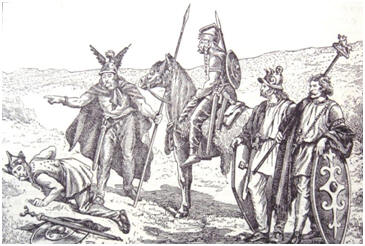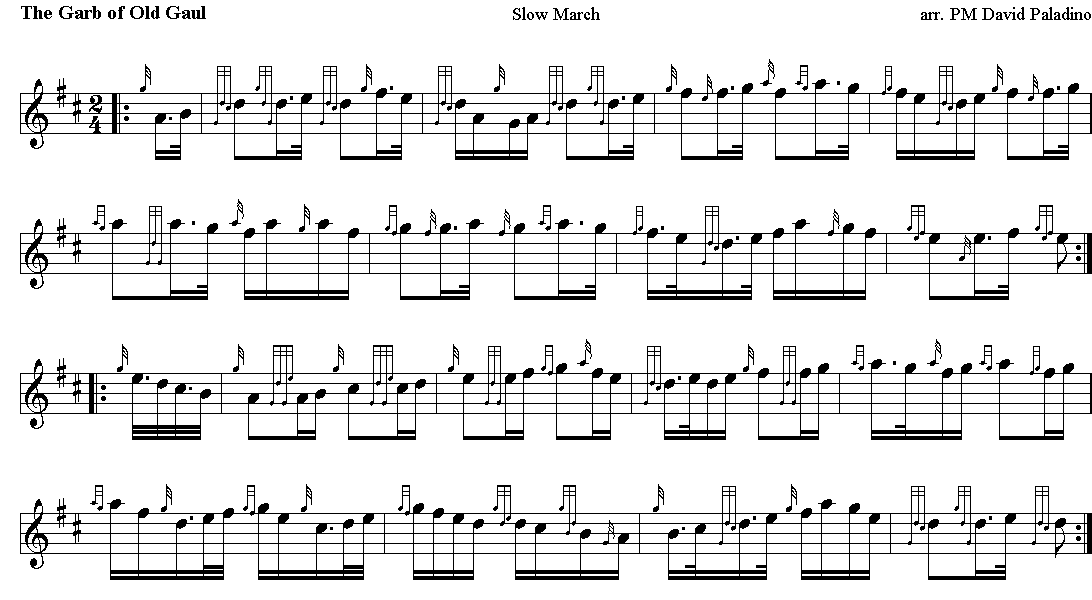Gaul (Latin:
Gallia)
was the name given, in ancient
times, to the region of Western
Europe comprising present-day
northern Italy, France, Belgium,
western Switzerland and the
parts of the Netherlands and
Germany on the west bank of the
Rhine river.
In English, the word
Around 1748, the words of "the Garb of Old Gaul" were composed. Major Reid (one of the most accomplished flute players of his age) set them to music of his own composition. It was originally written in English by Lieutenant-General Sir Henry Erskine, Bart. An excellent translation into Gaelic was done by Captain M'Intyre. This was seen as a recruiting song of the times.
The Garb of Old Gaul is the Regimental March of the Ayrshire Yeomanry. The Ayrshire (Earl of Carrick's Own) Yeomanry was a Regiment of the British Yeomanry and is now an armored Squadron of the Queen's Own Yeomanry (QOY), part of the British Territorial Army. It is the Lowlands of Scotland's only Royal Armoured Corps Unit and has an unbroken history stretching back to the 1790s.



